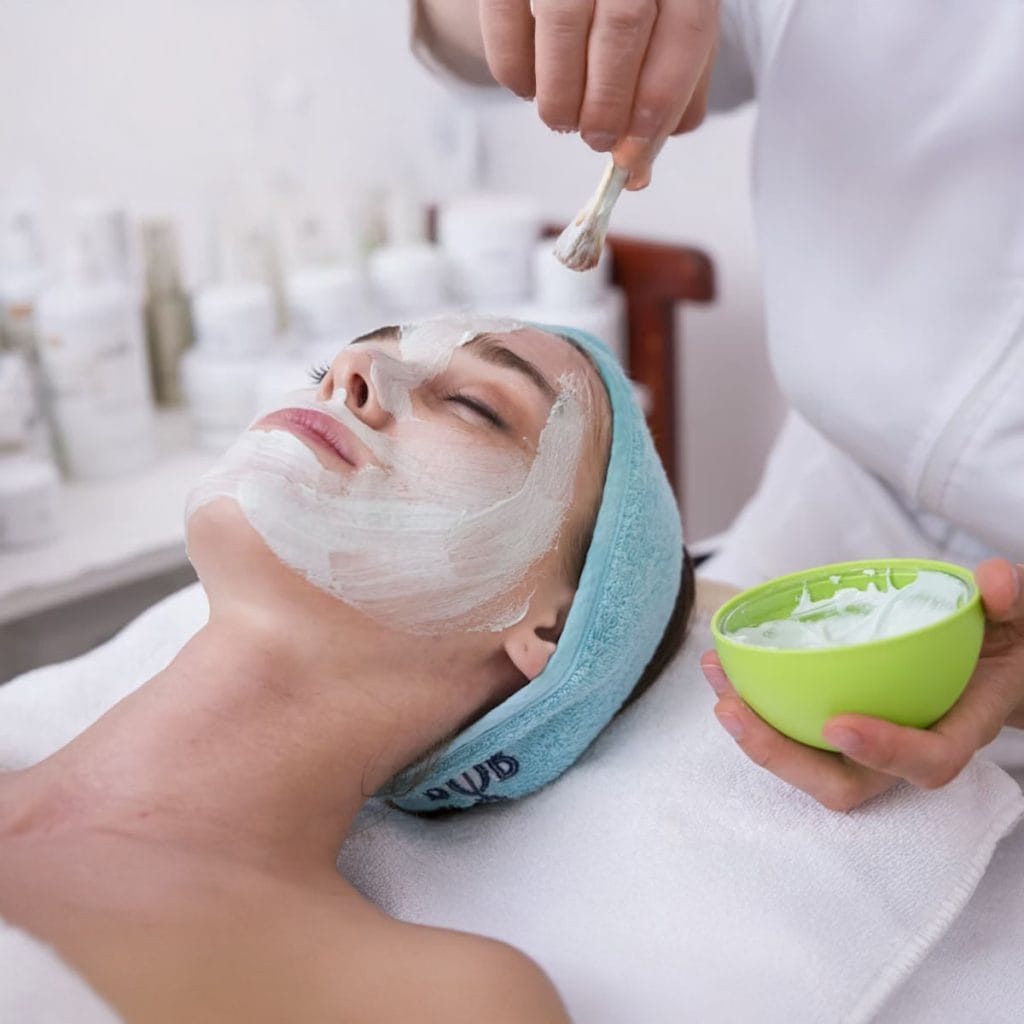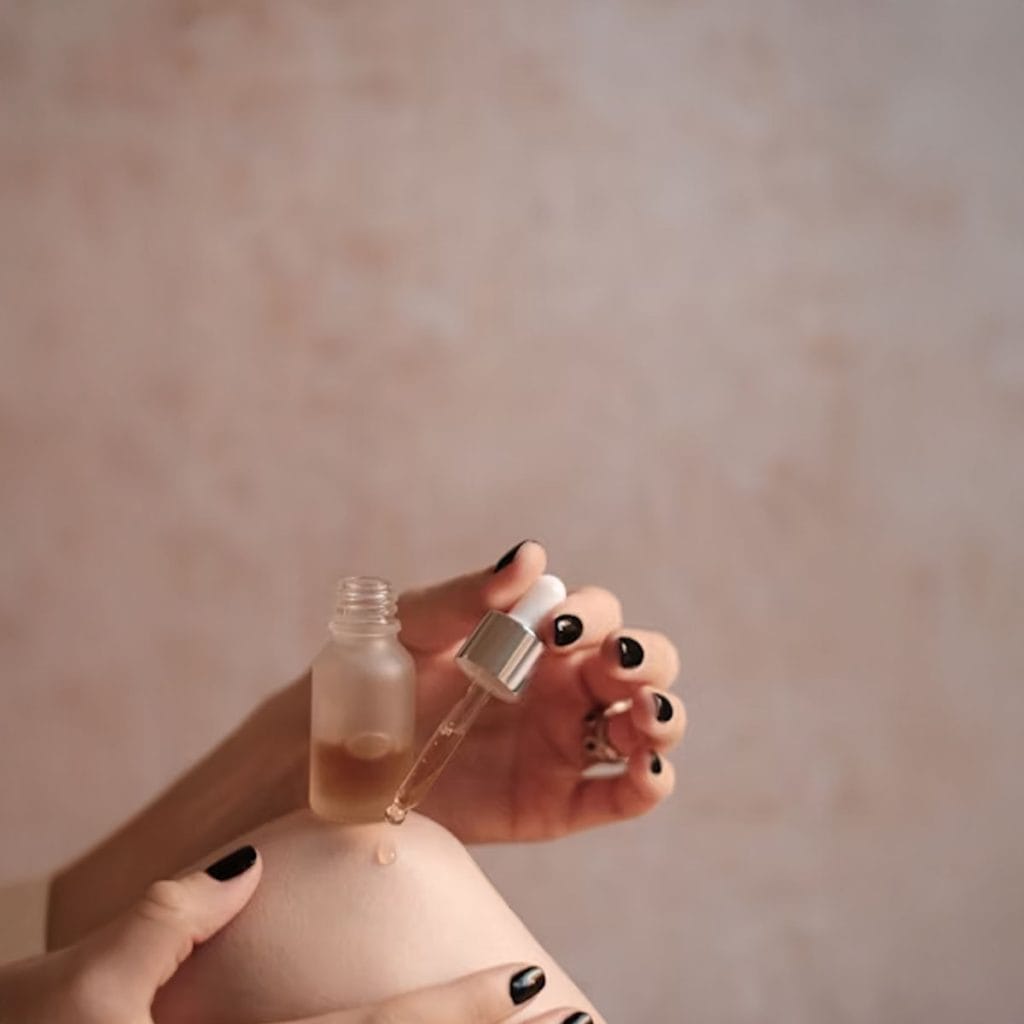In the past, looking younger often meant resorting to fillers or neuromodulators that temporarily masked age. But as demand evolves, so too does the science. Today’s aesthetic clients are no longer satisfied with short-term plumping or wrinkle smoothing. They are seeking something more enduring—treatments that restore the skin’s natural vitality at a cellular level. This shift marks the emergence of a powerful regenerative trend in dermatology, and at the centre of it sits one treatment making quiet but profound waves: polynucleotide injections.
These DNA-derived injectable therapies don’t just promise fresher skin. They biologically change the way it functions. By stimulating fibroblasts, promoting hydration, calming inflammation, and encouraging angiogenesis, polynucleotides support and restore dermal health from within. Their appeal lies not only in their results but in the modern values they represent: natural enhancement, sustainable impact, and minimal invasiveness.
Polynucleotide treatments are increasingly favoured by practitioners who are moving away from the artificial look of overt aesthetic work. What patients now seek is improved skin quality, not simply the disappearance of lines. That includes better elasticity, brightness, hydration, and tone. This preference is also fuelling another trend, prejuvenation, where younger individuals opt for subtle, preventative treatments long before the classic signs of ageing emerge.
The goal has changed. No longer do clients aim to look altered. They want to look rested, radiant, and real. Polynucleotides, which nourish and instruct the skin to heal and strengthen itself, offer a pathway to precisely that outcome.
What Are Polynucleotides and Why Do They Matter?
Polynucleotides (PNs) are long-chain molecules made from repeating nucleotide units, which are essentially the building blocks of DNA. These chains, typically extracted from fish-derived DNA (usually trout or salmon), are ultra-purified to remove proteins and any immunogenic substances. What remains is a clean, sterile gel composed solely of DNA fragments. Once injected into the skin, this formulation acts as a biostimulator, prompting a cascade of healing and regenerative responses.
Unlike hyaluronic acid fillers, which add volume, or skin boosters, which primarily hydrate, polynucleotides signal cells to activate and repair themselves. This means the treatment doesn’t just treat symptoms but gets to the root of the problem: weakened, ageing, or stressed dermal tissue.
The science behind their action is rich and multifaceted. When delivered into the dermis, polynucleotides:
- Activate fibroblasts to produce new collagen and elastin
- Bind water molecules to deeply hydrate the skin
- Neutralise free radicals to prevent oxidative stress
- Stimulate blood vessel formation, improving circulation and nutrient delivery
- Supply raw DNA material for cellular repair via the salvage pathway
This last mechanism is especially sophisticated. As the DNA fragments break down into oligonucleotides and nucleotides, surrounding skin cells reuse them to support DNA replication and repair, boosting skin health at a molecular level.
Fun Fact: Polynucleotide-based therapies were originally used in orthopaedics and wound healing long before they entered the aesthetics arena. Their adaptation to skin rejuvenation is a case of medical science elegantly migrating into cosmetic innovation.
A Multi-Layered Mechanism for True Regeneration
What sets polynucleotides apart is how comprehensively they address skin health. Their benefits go beyond surface-level improvement, encompassing structural renewal and defence against future damage.
Fibroblast Activation and Collagen Rebuilding
Fibroblasts are the core architects of the dermis. When polynucleotides are introduced, they bind to receptors on fibroblast membranes—particularly the adenosine A2A receptor—and activate a complex chain of intracellular signals. This prompts fibroblasts to reawaken, replicate, and increase their output of collagen and elastin. These two proteins are vital for strong, elastic skin, and their decline is one of the earliest hallmarks of ageing.
Instant and Lasting Hydration
Polynucleotides’ negative charge allows them to attract and hold large volumes of water. This acts like a dermal sponge, hydrating the skin from within. Patients often report improved skin turgor and plumpness within days of treatment. Unlike some injectables that flatten out hydration over time, PNs tend to provide sustained moisture retention due to their molecular structure.
Antioxidant Defence
Polynucleotides neutralise reactive oxygen species (ROS), the unstable molecules responsible for much of the ageing process. By scavenging these free radicals, PNs protect cells from oxidative stress, which not only helps preserve skin health but also supports collagen integrity over time.
Improved Blood Flow and Nutrient Supply
Through the stimulation of vascular endothelial growth factor (VEGF), polynucleotides promote angiogenesis, encouraging the development of new capillaries. This means more oxygen and nutrients reach skin cells, boosting metabolism and aiding in repair.
The Salvage Pathway: DNA Repair from Within
Once the DNA fragments begin to break down, they release nucleotides and oligonucleotides. These are taken up by skin cells and recycled for DNA synthesis. This mechanism—known as the salvage pathway—is more efficient than synthesising DNA from scratch. It enables the skin to repair damage more quickly and maintain its structural integrity over time.
Where Science Meets the Clinic: Evidence of Efficacy
Despite the growing clinical popularity of polynucleotide injections, some limitations remain in the academic literature. A 2024 systematic review in the Journal of Cosmetic Dermatology evaluated nine studies involving 219 patients. It found statistically significant improvements in elasticity, hydration, and fine lines. Most participants reported high satisfaction with minimal side effects, though the authors noted a need for larger and more standardised trials.
Nonetheless, the data so far is promising. One clinical study reported a 47% boost in collagen synthesis within 23 days of treatment. Another found notable increases in hydration and skin firmness among a diverse group of 143 patients. Interestingly, younger participants often showed improvements in texture and pore size, while older patients saw more dramatic changes in pigmentation and fine lines.
These treatments also shine in areas that other injectables struggle to manage.
The Under-Eye Area: A Showcase for Regeneration
Few regions of the face are as challenging to treat as the periorbital zone. The skin is thin, delicate, and prone to fine lines, dark circles, and puffiness. Hyaluronic acid fillers often produce unwanted side effects in this area, such as malar oedema (persistent swelling) or the Tyndall effect (a bluish tint from superficial placement).
Polynucleotides present an elegant alternative. They don’t add volume but instead restore function. By thickening the dermis, improving blood flow, and reducing inflammation, PNs gradually rejuvenate the under-eye without distortion. Practitioners widely report excellent outcomes, and patients appreciate the subtle, natural results.
Targeted Benefits for Common Concerns
Polynucleotides are used to treat a wide range of aesthetic and therapeutic conditions. Their applications include:
- General skin rejuvenation on the face, neck, and hands
- Stretch marks and acne scars, by improving dermal structure
- Rosacea, by calming inflammation and strengthening the skin barrier
- Hair thinning, by rejuvenating scalp microcirculation and follicle health
These treatments often serve as a first step in comprehensive aesthetic plans, particularly for patients seeking gentle yet effective results.
Comparing Polynucleotides with Other Injectables
Understanding where polynucleotides fit into the broader injectable landscape is vital. They are not replacements for fillers or boosters—they are something entirely distinct.
Polynucleotides vs Hyaluronic Acid Fillers
HA fillers provide immediate lift and structure. They are volumisers, not regenerative agents. Polynucleotides work more slowly but offer longer-term improvement in skin function and appearance. The two can be used together: HA to sculpt and PNs to nourish and heal.
Polynucleotides vs Skin Boosters (e.g., Profhilo)
Skin boosters hydrate and mildly stimulate collagen. Polynucleotides go deeper, affecting multiple pathways and delivering structural rebuilding. They are ideal where the priority is repair rather than cosmetic gloss.
Polynucleotides vs PRP
Platelet-rich plasma is a personalised therapy derived from a patient’s own blood. It contains growth factors but varies in efficacy based on the patient’s health. PNs offer a standardised, off-the-shelf alternative with consistent results and easier clinical handling.
Leading Brands and Market Availability in the UK
As demand for polynucleotide injections rises, so does the number of products available to UK practitioners. All reputable formulations are classified as Class III medical devices and must carry a CE or UKCA mark, confirming their compliance with safety and performance standards.
Key Products Practised Across UK Clinics
Each brand has its own formulation strengths, target areas, and concentration levels. While not interchangeable, most fall into recognisable categories that suit different patient needs.
Plinest® (Mastelli)
Pioneered by the Italian pharmaceutical firm Mastelli, Plinest is regarded as the original polynucleotide product. Extracted from trout DNA and manufactured using PN-HPT™ (Polynucleotide – Highly Purified Technology), it is known for high safety and biocompatibility. The Plinest range includes:
- Plinest: For general revitalisation of the face and neck
- Plinest Eye: A gentler formulation for the delicate under-eye area
- Newest®: A hybrid product that combines non-crosslinked hyaluronic acid with polynucleotides for enhanced hydration alongside regeneration
Nucleofill® (Promoitalia)
This brand offers a wide variety of molecular weights and concentrations, allowing tailored use:
- Soft Plus/Eyes: For gentle treatment around the eyes
- Medium Plus: Suited to moderate signs of ageing
- Strong: Targeted for more advanced laxity and dermal breakdown
- Nucleofill Hair: Specifically formulated for scalp injections to support hair restoration
PolyPhil™ (formerly PhilArt, by Croma-Pharma)
Croma’s line was rebranded to PolyPhil™ to better reflect the core ingredient. It includes:
- PolyPhil: A high-concentration formulation for the face, neck, and décolletage
- PolyPhil Eye: A refined version for periorbital application
- PhilArt Next: Combines hyaluronic acid with PNs for added plumpness and hydration
Ameela® (Aesthetics Group)
Frequently recommended for under-eye rejuvenation, Ameela is gaining popularity due to its noticeable impact on dark circles and crepey texture. The precise concentration is not publicly disclosed but is marketed as “high-potency.”
Vitaran® (Fox Group)
This UK-exclusive brand is CE-marked and used for general skin quality improvement. Fox Group positions it as a high-quality, flexible PN option that is accessible to clinics across a wide skill spectrum.


Where Do Polynucleotides Fit into Modern Aesthetic Practice?
In a clinic, PNs are often used to complement other treatments rather than replace them. Their role is distinct: to regenerate rather than augment. This makes them especially suitable in personalised protocols that aim to combine structural enhancement with dermal health.
HA Fillers vs Polynucleotides
- HA fillers are gel-based volumisers, working on deep folds or structural loss.
- PNs are biologically active agents that improve skin thickness, texture, and tone over time.
- Combining both often results in a more natural-looking finish, with improved support and surface quality.
Skin Boosters vs Polynucleotides
- Skin boosters such as Profhilo provide fast hydration and collagen stimulation via non-crosslinked HA.
- PNs stimulate cell renewal and DNA repair, making them ideal for inflamed or scarred skin.
- Where boosters fade in hydration impact, PNs create lasting dermal changes.
PRP vs Polynucleotides
- PRP (platelet-rich plasma) is drawn and spun from the patient’s blood, making results less predictable.
- PNs are consistent in formulation, easy to administer, and avoid the variables that affect autologous therapies.
- PRP may suit patients who are committed to fully natural treatments, but PNs offer broader control and efficiency.
Patient Suitability and Consultation Process
Polynucleotides are suitable for a wide demographic. The decision to use them hinges not just on age but on patient goals, skin health, and sensitivity.
- Young patients (20s to 30s) often use PNs for maintenance and prejuvenation
- Mid-age clients (40s to 50s) benefit most from corrective effects like collagen rebuilding and firmness
- Older patients (60s+) often use them alongside other treatments to improve dermal density and hydration
Those seeking subtle improvement without volume are ideal candidates, especially individuals wary of looking ‘overdone’. They are also well-suited for clients with specific concerns such as rosacea, acne scarring, or sensitive under-eye skin.
A full consultation is essential. Practitioners must screen for allergies (particularly to fish), check medical history, and explain the gradual timeline of results. Consent must be clearly documented, with a realistic overview of side effects and outcomes.
Administration and Aftercare
Polynucleotide treatments are minimally invasive and performed in a clinical setting. Each session follows a structured approach:
Procedure Breakdown
- Preparation: Cleanse the area and apply a topical anaesthetic
- Injection: Choice of tool (needle or cannula) depends on the treatment zone and desired depth
- Technique:
- Needle: Ideal for precision, especially under the eyes or around fine lines
- Cannula: Preferred for larger surface areas, offering reduced trauma and quicker recovery
- Post-care: Most patients can return to normal activities quickly. Redness, swelling, or mild bruising typically subsides within 48 hours.
A full course involves 2 to 4 sessions, spaced 2 to 4 weeks apart. Maintenance treatments every 6 to 12 months preserve results.
Aftercare Recommendations
- Avoid touching or pressing the area for 24 hours
- No makeup application for 12–24 hours
- Avoid heat exposure (exercise, saunas) for 48 hours
- Use SPF 50 daily to protect treated skin
UK Regulation and Safety Standards
In Britain, the polynucleotide market operates under the medical device classification, with growing scrutiny expected in the coming years.
Safety Profile
Polynucleotide injections are well tolerated. Most side effects are minor and short-lived: redness, slight swelling, or injection site bruising. Serious risks, such as infection or nodule formation, are rare and typically related to poor technique or improper handling.
The only absolute contraindication is a fish allergy, as the DNA source is derived from marine species. Other contraindications include:
- Pregnancy or breastfeeding
- Active skin infections
- Bleeding or autoimmune disorders
UK Legal Landscape
While not Prescription-Only Medicines (like botulinum toxin), PNs are governed under Class III medical device laws, requiring CE or UKCA marking. They are monitored by the MHRA, which is steadily expanding its regulatory remit over aesthetic procedures.
A major development on the horizon is the licensing system under the Health and Care Act 2022, which will enforce national standards for practitioners and premises alike. This will close the existing grey area where non-prescription injectables are unregulated and will mandate strict hygiene, training, and practice protocols.
Clinics already operating at high standards—those following JCCP and CPSA guidelines—are best prepared to meet these upcoming requirements. For the public, it underscores the importance of choosing certified professionals who prioritise both safety and skill.
Looking Forward: Innovation in Regenerative Aesthetics
Polynucleotides mark the transition from cosmetic masking to cellular correction. Their rise reflects a deeper shift in values: one where health, transparency, and longevity matter more than perfection.
Three Key Future Trends
- Combinational Therapies: PNs will increasingly be used with energy-based devices, lasers, and hyaluronic acid fillers to offer multi-layered rejuvenation.
- Scientific Validation: As interest grows, more randomised controlled trials will refine dosing, protocols, and long-term efficacy.
- Advanced Formulations: Next-generation PNs may include amino acids, peptides, or growth factors, expanding their use into highly tailored regenerative therapies.
This evolution will blur the boundaries between medicine and aesthetics, setting the stage for treatments that rebuild skin not just for cosmetic effect, but for lifelong function.
Final Thoughts
Polynucleotide injections represent a clinical turning point. They are not gimmicks or trends. They are the beginning of a shift, one where aesthetic work becomes a branch of true regenerative medicine. Whether used as a standalone solution or integrated into wider treatment plans, PNs are poised to become a mainstay in the modern aesthetic clinic.
They serve the health-conscious client, the cautious patient, and the practitioner who values long-term skin integrity over instant impact. For anyone interested in looking not just younger but healthier, they may be the most important tool in today’s dermatological arsenal.



